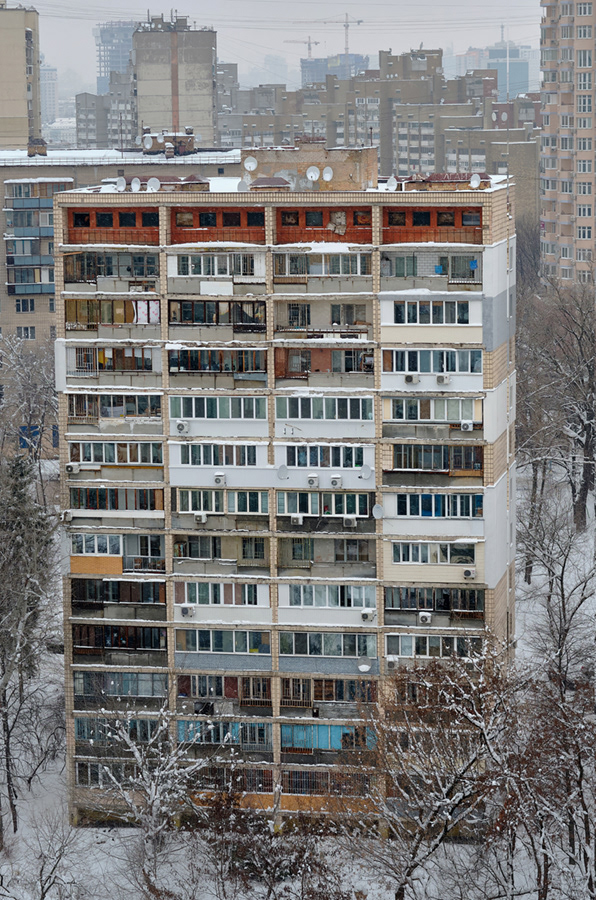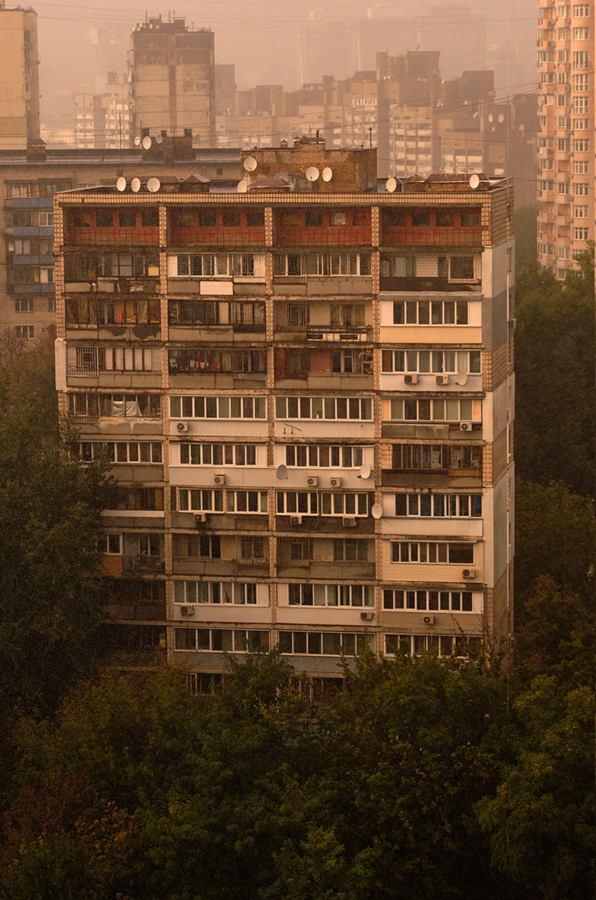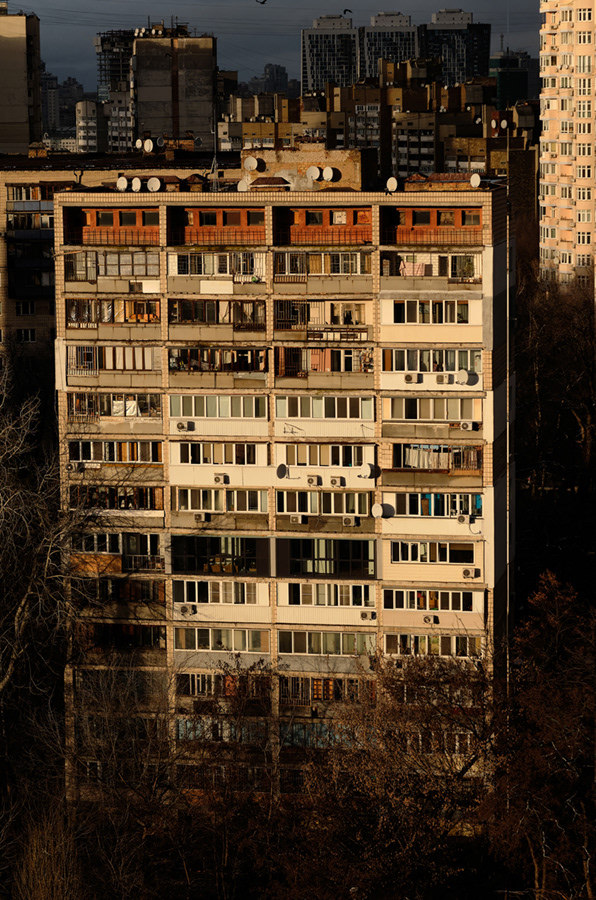Fluidity. The Fluidity series consists of 24 photographs of a Kyiv high-rise building. This is a typical panel building, common in the dwelling sectors in the 1970s, which made the architectural appearance of a large part of post-Soviet cities featureless and depressing. However, the surrounding world is constantly changing, giving new images and moods to familiar unshakable objects, where even a clumsy panel high-rise building acquires its charm in this fluidity of nature and the modifications of the city.
At the first glance, this landscape immediately evokes comparison with Rouen Cathedral, a popularized series by Claude Monet, where the famous impressionist depicts the cathedral from the same angle at different times of the day. And yet, if the impressionistic landscape of the 19th century is an ode to sensual pleasure from architectural sophistication and the nuances of nature, a photograph of the 21st century, made according to the same principle, appears to be a detached contemplation of an urban procession.
On the one hand, the viewer observes the fluidity of time due to the change in the surrounding landscape; on the other hand, there is the unshakable stability of a house, which is the home of dozens of people and, due to the typical look of the building, refers to memories of one’s own home. Roland Barthes wrote about this domesticity of photographs of urban and rural landscapes in his book Camera Lucida, describing a photo of an old house in Granada. The natural calmness created by the feeling of home, which is inherent in everyone, encourages us to look for a place of our shelter in the images of houses. This search is imaginative; it is different from browsing real estate catalogues, which makes contemplation consumerist. Here, we find a manifestation of Heidegger’s concept of heimlich (familiar, homely), which is part of the everyday perception of space.
The photo shows that in the background, the life of the city is in full swing, the landscape is changing, new glass skyscrapers are growing, and construction cranes are working. Even while remaining undisturbed and detached, the metamorphoses of the surrounding world leave their mark on the observer. An adult person is somewhat similar to this house, which exists in its form, acquires its own stories and habits, and everything seems to be transformed, but essentially remains itself.
Плинність. Серія “Плинність” складається з 24 знімків київської багатоповерхівки. Це типовий панельний будинок, якими забудовували спальні райони в 1970-ті роки, зробивши архітектурний вид значної частини пострадянських міст безликим та депресивним. Але навколишній світ безперервно змінюється, надаючи звичним непорушним речам нові образи і настрої, де навіть кострубата панельна багатоповерхівка набуває власного шарму в цій плинності природи і видозмінах міста.
Першочергово цей пейзаж відразу викликає порівняння з популяризованою серією Клода Мона “Руанський собор”, в якій відомий імпресіоніст зображає собор в різні періоди дня з одного ракурсу. Але якщо імпресіоністичний пейзаж ХІХ століття – це ода чуттєвій насолоді від архітектурної вишуканості та нюансам природи, то фотографія ХХІ століття, зроблена по тому ж принципу, постає як відсторонене споглядання урбаністичної процесії.
З одного боку глядач спостерігає часову плинність через зміну навколишнього пейзажу, з іншого – непорушну стабільність одного будинку, який є домівкою десятків людей і через типовість забудови відсилає до спогадів про власний дім. Про таку одомашенність фотознімків урбаністичних та сільських пейзажів писав Ролан Барт в книзі Camera Lucida, описуючи фото старого будинку в Гранаді. Природній спокій від відчуття дому, який притаманний кожному, спонукає шукати в зображеннях будинків місце власного прихистку. Цей пошук фантазійний, він відрізняється від перегляду каталогів нерухомості, які роблять споглядання споживацьким. Тут проявляється поняття Гайдеґера – «heimlich» (знайоме, домашнє), яка є частиною побутового сприйняття простору.
На фото видно, що на задньому фоні вирує життя міста, змінюється ландшафт, виростають нові скляні висотки, працюють будівельні крани. Навіть залишаючись непорушним та відстороненим, метаморфози оточуючого світу залишають свій відбиток на спостерігачеві. Доросла людина чимось схожа на цей будинок, який існує у власній формі, обростає своїми історіями та звичками і наче все трансформується, але по суті лишається собою.























